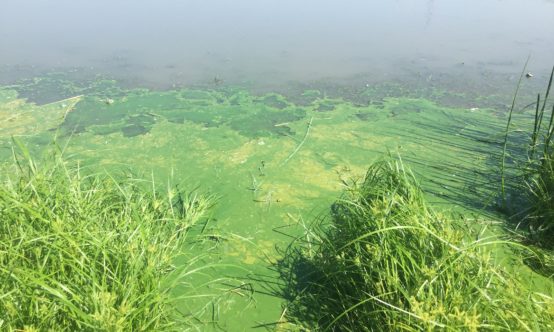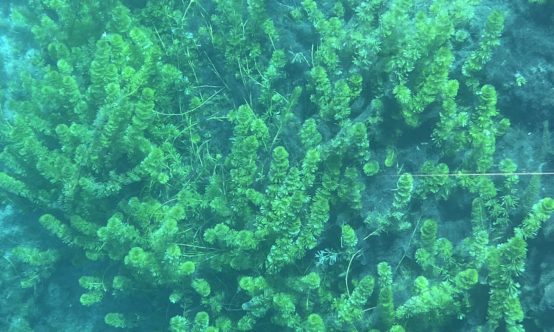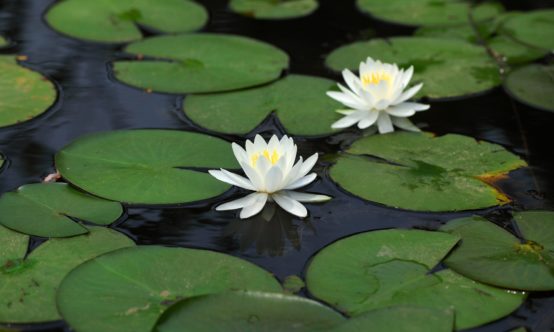Many ponds have more than one type of aquatic plant, and care must be taken to identify all the aquatic plants inhabiting the pond. Some pond plants may be beneficial to local or migratory wildlife, and therefore, may want to be encouraged or at least not eliminated. Click on whichever group of aquatic plants that you feel your specimen may belong to and work through the examples until you find it.
Aquatic plants are generally divided into four groups for management purposes. These groups are:
Algae and Other Plankton

Algae are very primitive plants. Some algae are microscopic (planktonic algae). Others are thin and stringy or hair-like (filamentous algae). While still others are large and resemble higher plants but without true roots (chara).
Floating Plants

True floating plants are not attached to the bottom. Floating plants come in sizes from very small (duckweed) to over a foot in diameter (water hyacinth). Most, but not all, have roots that hang in the water from the floating green portions.
Submerged Plants

Submerged plants are rooted plants with most of their vegetative mass below the water surface, although some portions may stick above the water. One discerning characteristic of submerged plants is their flaccid or soft stems, which is why they do not usually rise above the water’s surface.
Emergent Plants

Emergent plants are rooted plants often along the shoreline that stand above the surface of the water (cattails). The stems of emergent plants are somewhat stiff or firm.